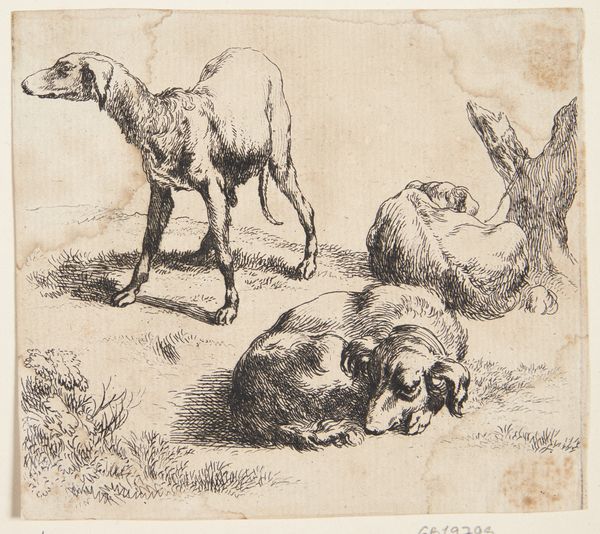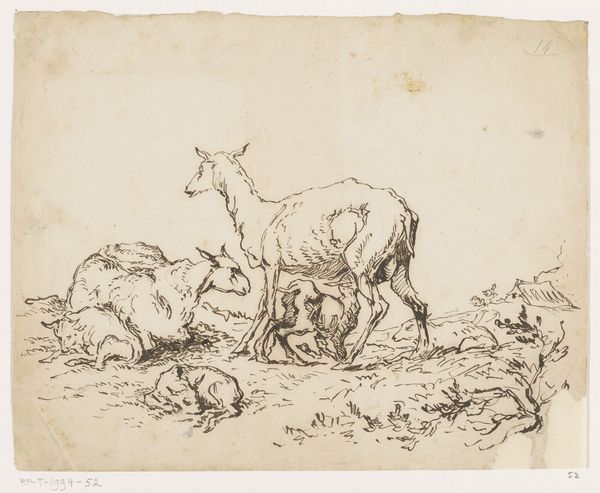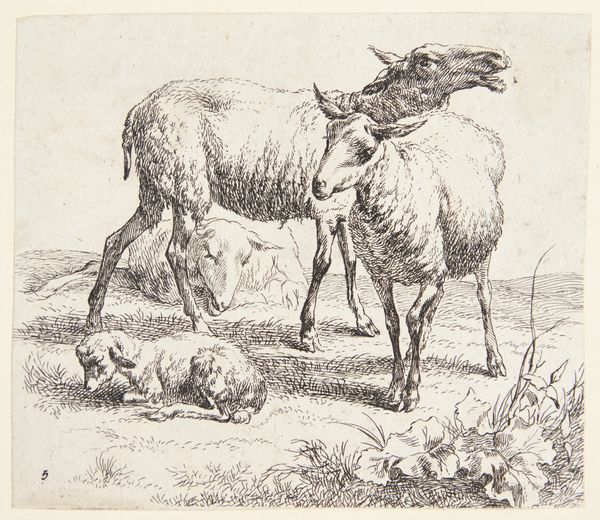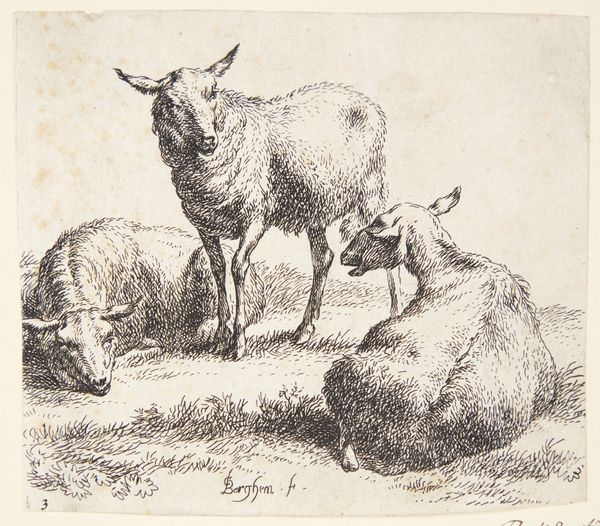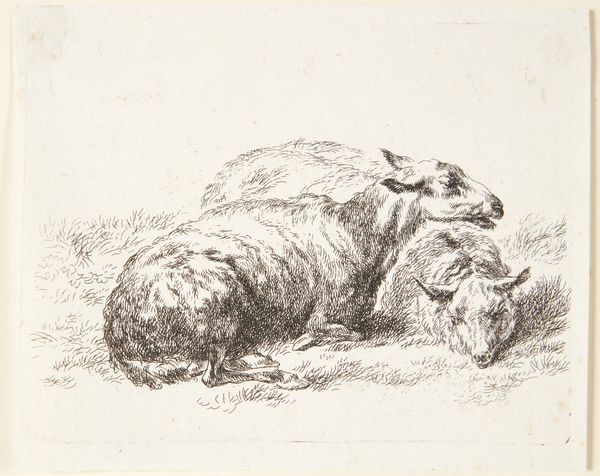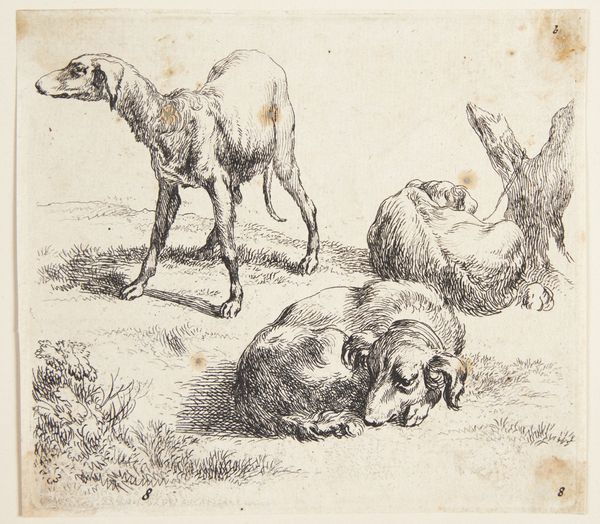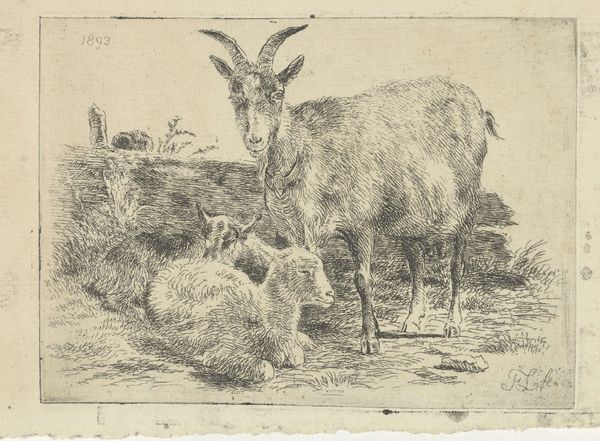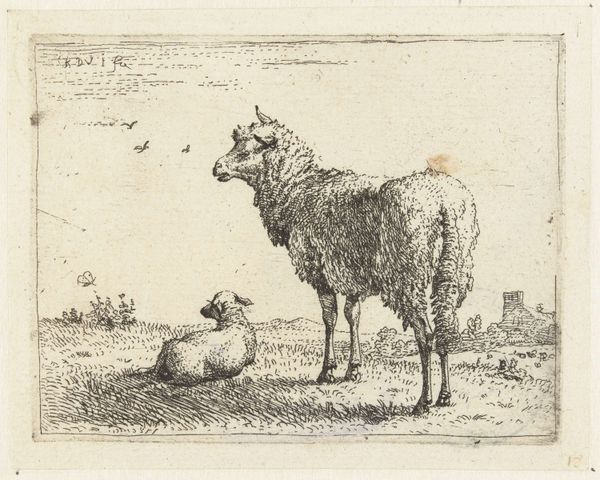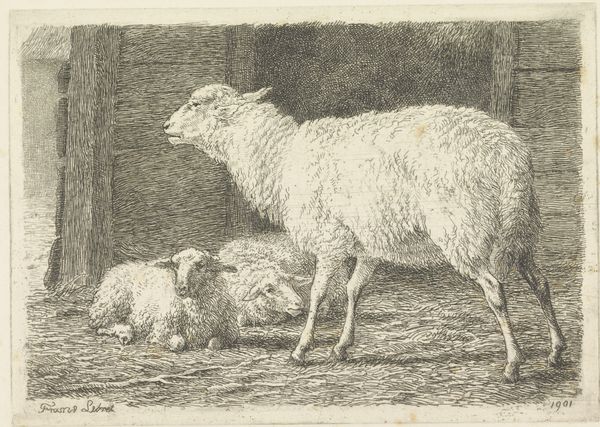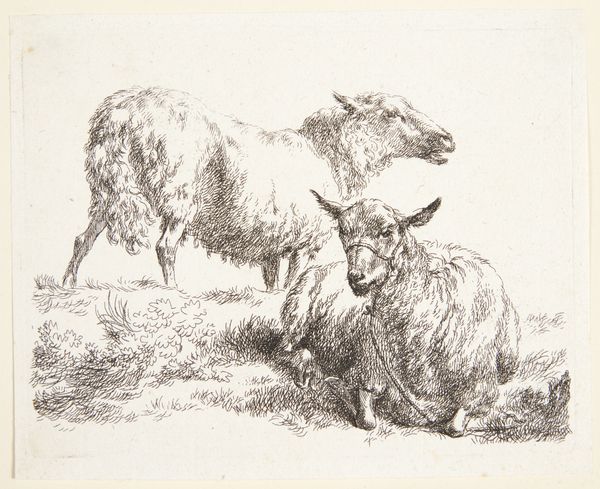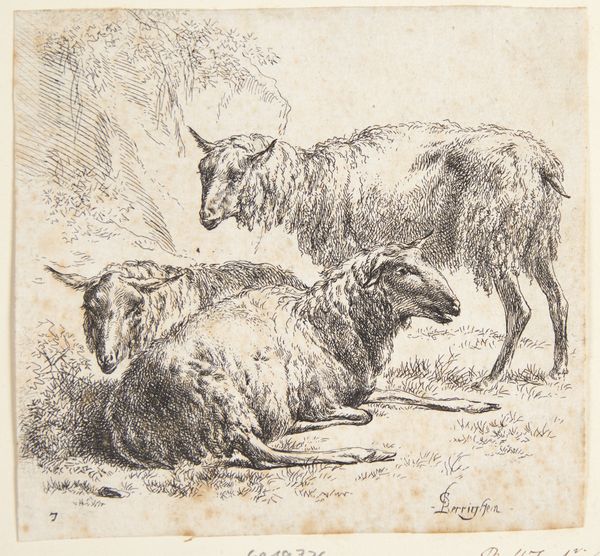
drawing, print, etching, ink
#
drawing
#
animal
# print
#
etching
#
landscape
#
ink
#
pencil drawing
#
genre-painting
#
realism
Dimensions: 103 mm (height) x 110 mm (width) (plademaal)
Curator: Nicolaes Berchem's "Liggende får med to lam," created sometime between 1620 and 1683, uses etching and ink to capture a quiet scene of sheep in a landscape. It resides here at the SMK, Statens Museum for Kunst. Editor: The tranquility is quite arresting. It’s all soft curves and gentle textures. I am compelled by the sheer ordinariness. Nothing spectacular, only sheep resting in a field, and rendered with incredible nuance. Curator: Its focus is clearly on the everyday—a scene of pastoral life popular within genre painting of the period. It speaks to a broader interest in depicting commonplace activities and familiar subjects, celebrating the rural and agricultural sphere. How the public began to view their own world shifted. Editor: Observe how the artist builds form with intricate cross-hatching. The visual weight is really fascinating as a result. He suggests the density of the sheep’s wool merely by varying the density and direction of his lines. There are also darker and rougher etched patches near the ground; together with the brighter upper portion we have some really compelling contrasts in tone that make the composition vibrant despite its simple subject matter. Curator: Those linear strategies can be observed throughout Berchem's other landscape drawings, which depict rural labor. Note the absence of any human figure to emphasize the dignity of animal life but it’s an imagined rurality which has to be recognised in comparison with other pastoral paintings in which animal and figures create carefully designed harmony. It would not be unexpected if this work was commissioned for a merchant interested in themes around land ownership and management, for example. Editor: An interesting speculation, and a worthy tangent to observe the art of this period. But looking at the arrangement, one must note the sheep's positioning on a gentle diagonal slope creates movement despite them resting. Their resting isn't static, or simply figurative but a compositional element to emphasize life’s continuation. Curator: A persuasive analysis; I am intrigued to hear how its structure and form creates movement from seemingly sedentary creatures, an excellent example of imbuing the everyday with such liveliness. Editor: Indeed, a deeper understanding of this small artwork reveals how something seemingly trivial reveals universal dynamics through its attention to the simple lines of composition and texture.
Comments
No comments
Be the first to comment and join the conversation on the ultimate creative platform.

